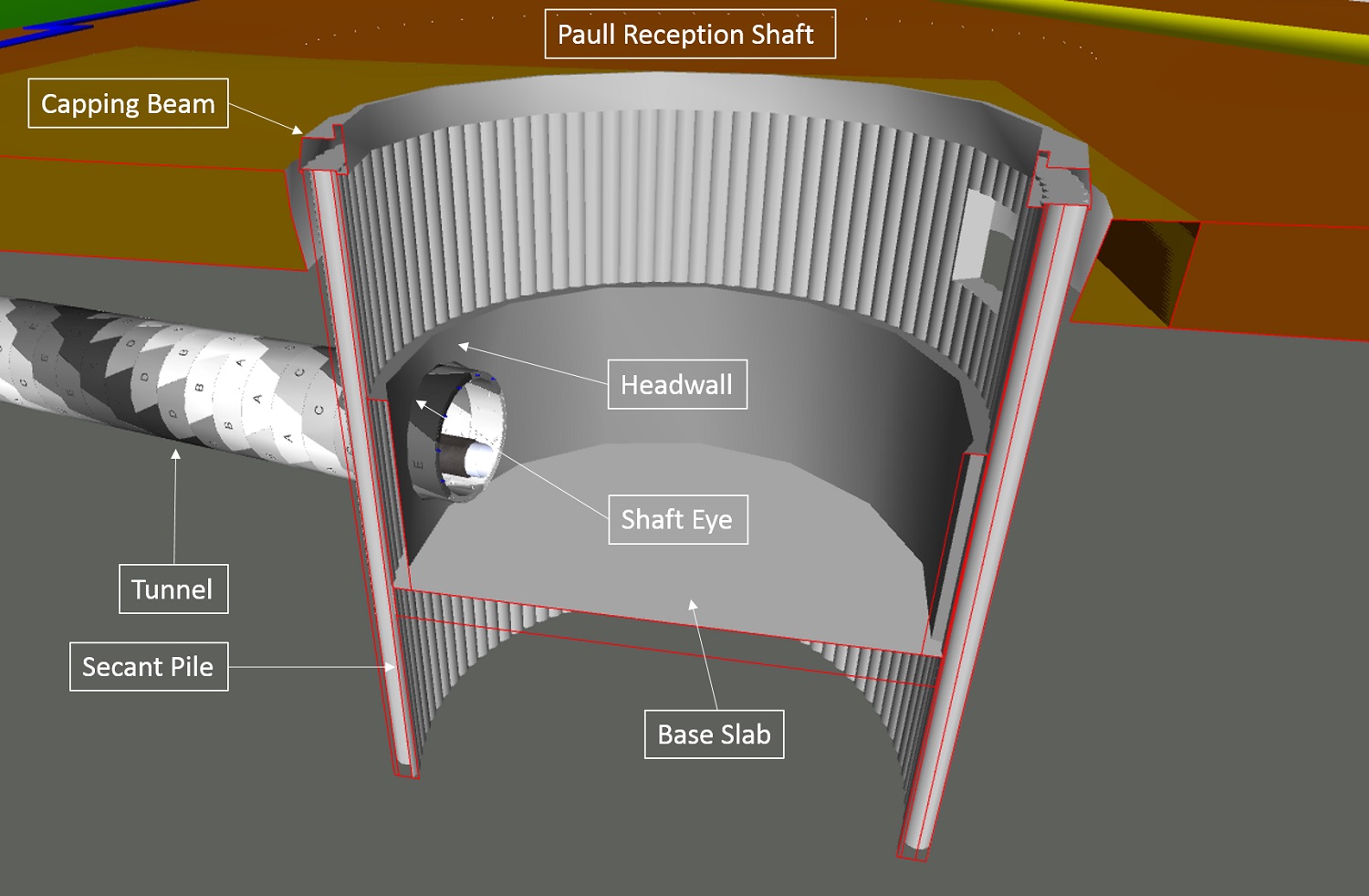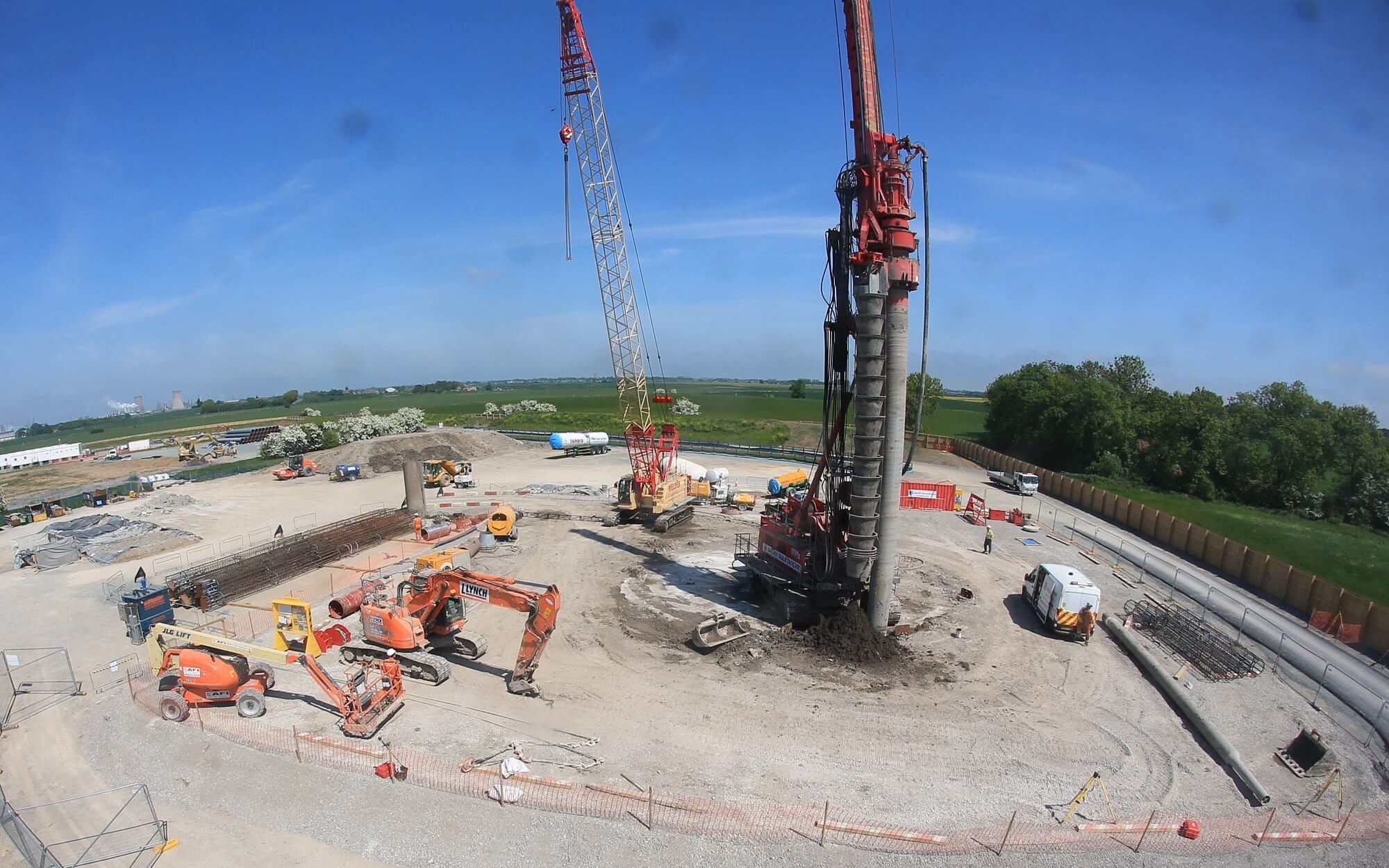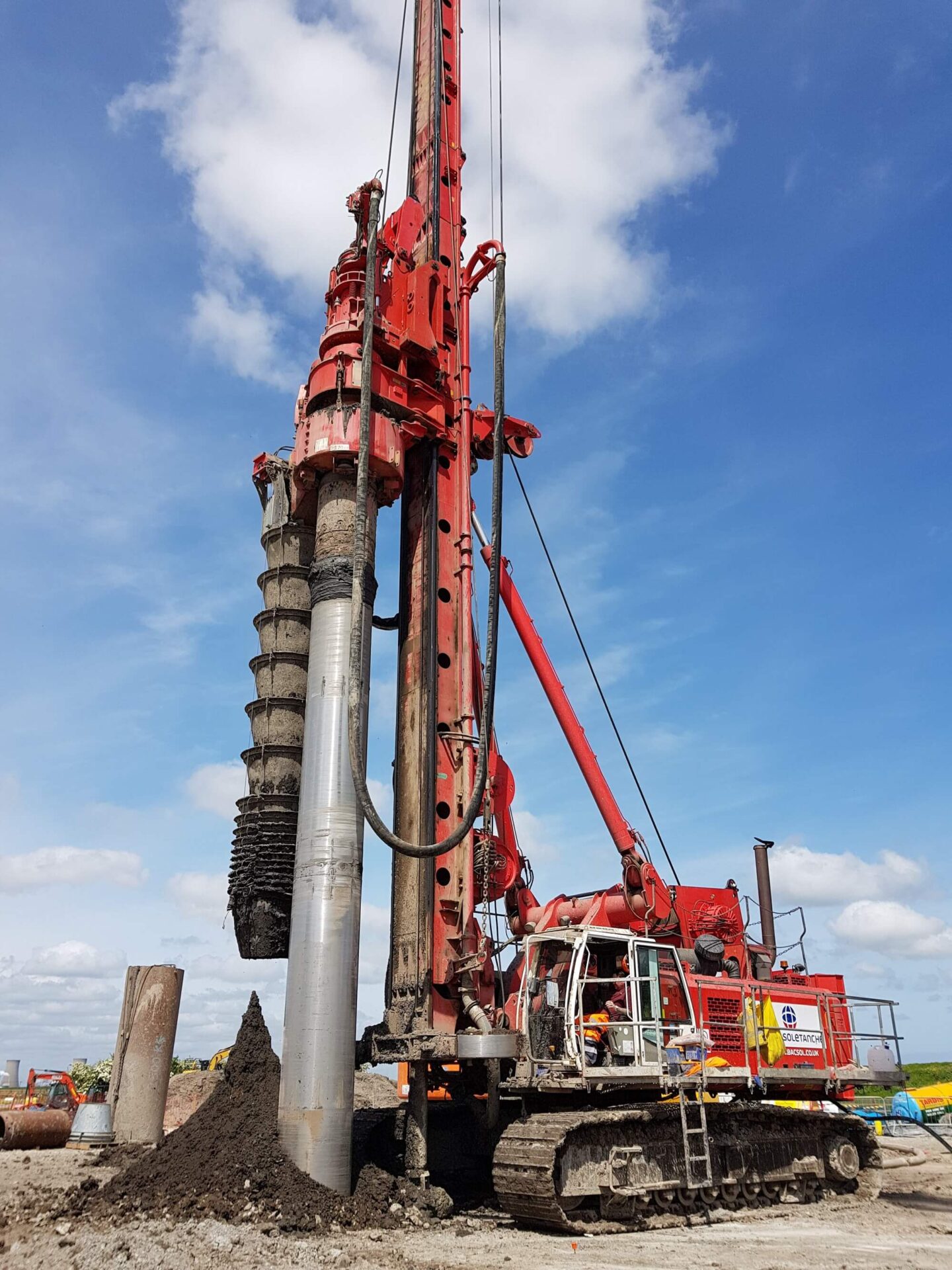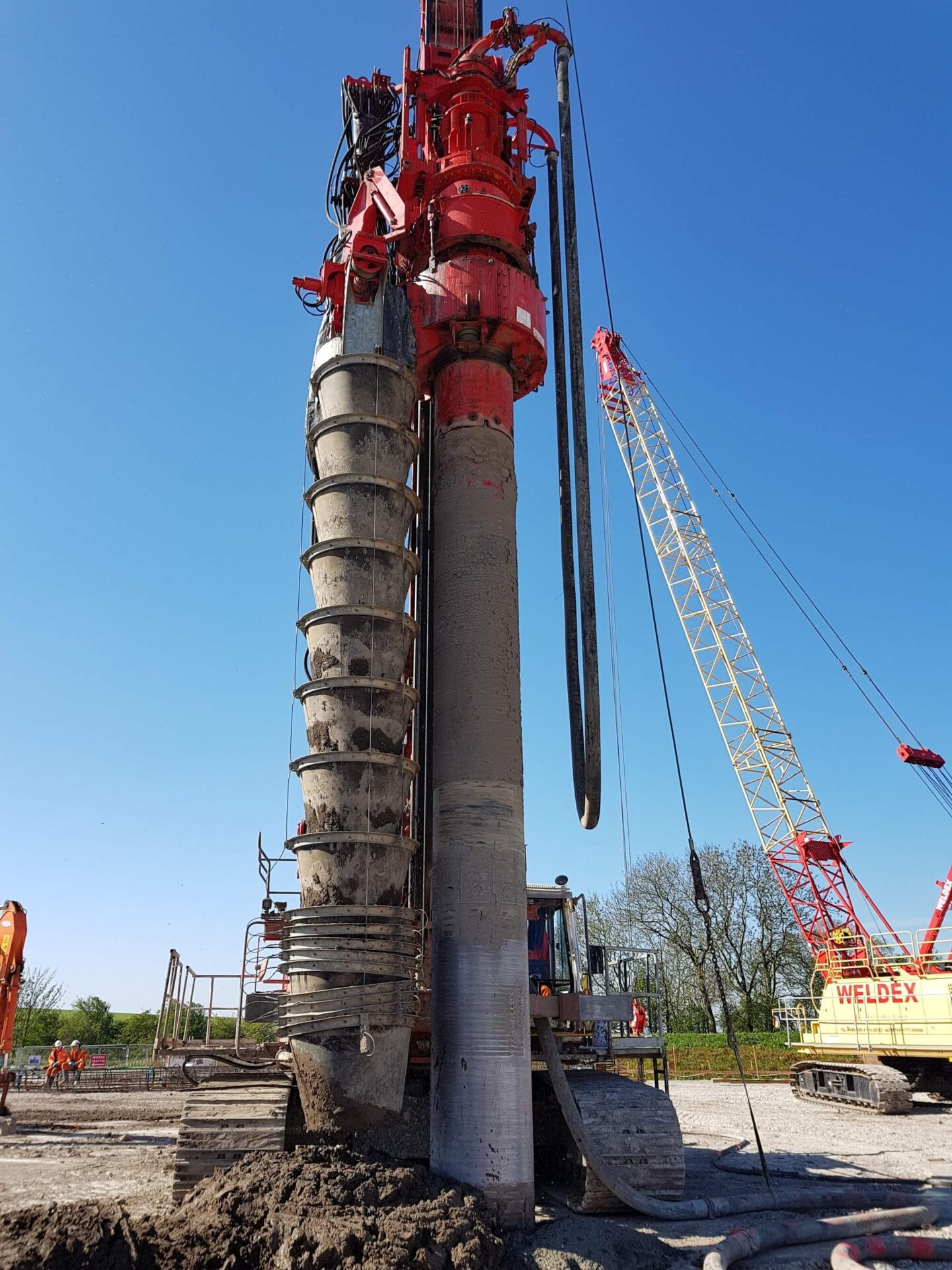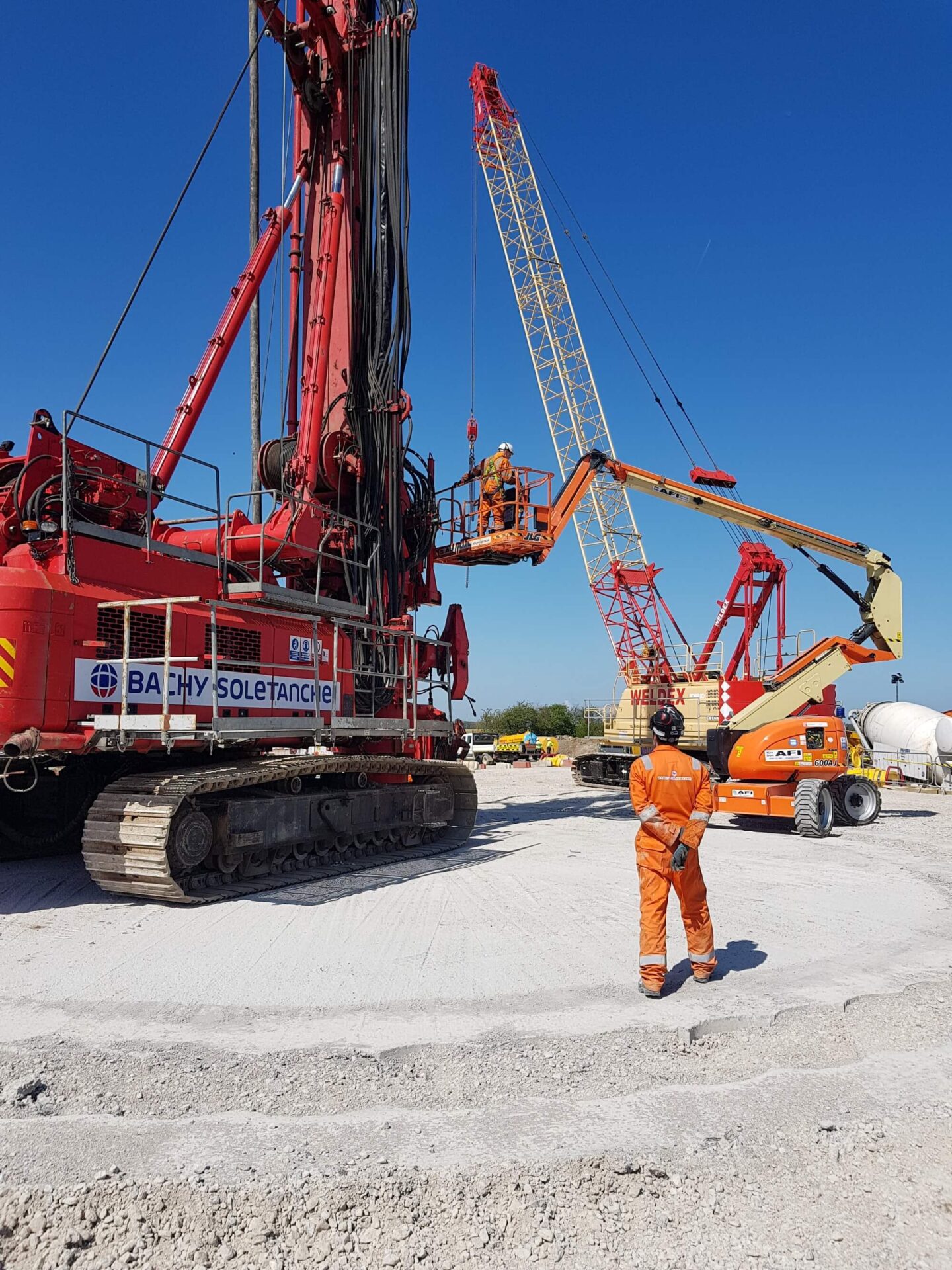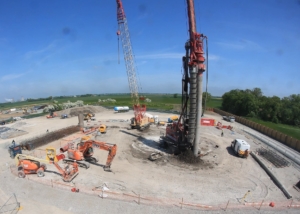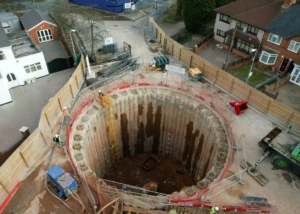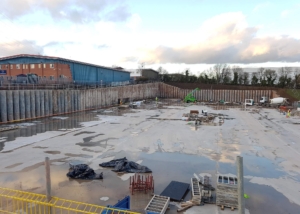THE SCHEME
The National Grid is constructing a tunnel under the River Humber as part of a gas pipeline replacement project, known as Feeder 9. The existing pipeline, a strategic component of the National Transmission System, is situated on the river bed and as a result has been subject to erosion. The project will allow a new pipeline to run through the 5.4km tunnel and will help transport approximately 20% of the UK’s gas supply for the next 40 years.
DESIGN AND PLANNING
Bachy Soletanche was contracted to construct the reception shaft for the tunnel boring machine on the north side of the river. The original scheme at Feeder 9 required the construction of a large diameter piled wall.
Following a review with the project team there was concerns this would not be the most effective solution. Bachy Soletanche’s design team re-engineered the project to reduce the pile diameter from 1200mm to 900mm, along with utilising the cased secant piled (CSP) method.
The CSP method was adopted due to the verticality requirements on the project.
PILING OPERATIONS
Bachy Soletanche constructed a 17m diameter secant shaft using the hard/hard method. The shaft was formed of 86 piles, which were bored to a depth of 20m. The installation of reinforcement cages required accurate planning and placement, with the use of split cages in the location where the tunnel boring machine would enter the shaft.
Prior to the operations commencing, Bachy Soletanche reviewed local concrete suppliers and following a period of testing, Edgar Ready Mix Concrete was selected due to the consistency, locality and availability. Following completion of the piling works, the shaft was excavated to enable the base slab to be cast, before being backfilled in preparation of receiving the tunnel boring machine.
